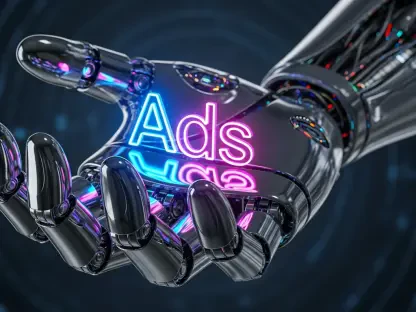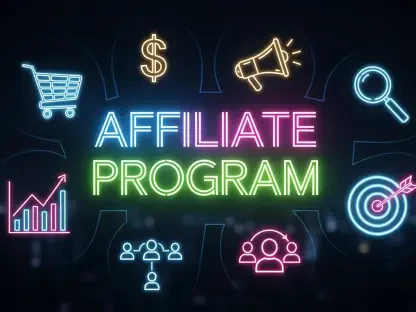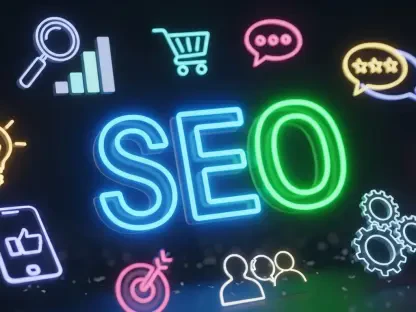Introduction to AI in Advertising
The advertising landscape is undergoing a seismic shift as artificial intelligence reshapes the very fabric of content creation, with a staggering projection that AI-driven tools will influence over 60% of digital ad spend by the end of this year, redefining how brands connect with audiences. This transformative technology, particularly in video and imagery, offers unprecedented opportunities for personalization and efficiency. From generating hyper-realistic visuals to automating campaign workflows, AI is no longer a futuristic concept but a core component of modern marketing strategies.
Key industry players, including the Interactive Advertising Bureau (IAB), Media Ratings Council (MRC), and World Federation of Advertisers (WFA), are at the forefront of navigating this evolution, alongside major platforms like Meta, TikTok, and YouTube that host much of this content. These organizations are grappling with the dual challenge of harnessing AI’s potential while addressing critical concerns around trust and transparency. Technological advancements, such as machine learning algorithms capable of crafting tailored ads in real-time, are driving rapid adoption, yet they also raise initial regulatory questions about authenticity and accountability in consumer-facing content.
The stakes are high as the industry seeks to balance innovation with integrity, ensuring that AI enhances rather than undermines brand credibility. Early concerns focus on the risk of misleading content slipping through unchecked, prompting a collective push for guidelines that can keep pace with these cutting-edge tools. This dynamic sets the stage for a deeper exploration of how the advertising sector is responding to both the promises and pitfalls of AI integration.
Current Trends and Market Dynamics in AI-Driven Advertising
Emerging Trends in AI Content Creation
AI tools are revolutionizing advertising with capabilities that border on the surreal, such as OpenAI’s Sora, which generates photorealistic videos from simple text prompts, altering the speed and scope of campaign development. Marketers are increasingly leveraging these technologies to craft visually stunning content at a fraction of traditional costs, enabling rapid testing of creative concepts across diverse audience segments. This shift is fundamentally changing how strategies are devised, with a focus on dynamic, data-driven outputs that adapt to real-time feedback.
However, consumer expectations are evolving in tandem, with a growing demand for authenticity amid fears of deception from AI-generated materials that may not disclose their synthetic origins. The rise of misleading content has sparked debates over ethical boundaries, as brands face the challenge of maintaining credibility when errors or manipulations go viral. Additionally, the emergence of “faceless creators”—AI-driven personas producing content without human involvement—has split opinions, with some seeing them as innovative tools for niche campaigns, while others question their ability to forge genuine emotional connections.
Despite these hurdles, the efficiency and cost-saving potential of AI are undeniable, particularly for smaller brands seeking to compete in crowded markets. Yet, the risk to brand reputation looms large when low-quality or inappropriate content surfaces, underscoring the need for robust vetting processes. Balancing these opportunities and risks remains a critical focus as the industry navigates this uncharted territory.
Market Insights and Future Projections
Recent data highlights the explosive growth of AI in advertising, with adoption rates among agencies climbing significantly, and investments projected to increase by 25% annually from this year through 2027. This surge reflects a broader shift in budget allocation, as more resources are directed toward AI-powered tools for content creation and programmatic ad buying. The financial commitment signals confidence in AI’s ability to deliver measurable returns, even as experimentation continues to define its role.
Looking ahead, forecasts suggest that AI content creation will dominate lower-funnel, performance-driven campaigns, potentially accounting for a substantial portion of digital ad spend by the decade’s end. However, performance indicators like consumer trust metrics reveal persistent concerns, with surveys indicating that a notable percentage of audiences remain wary of undisclosed AI content. Brand safety also emerges as a pivotal issue, as marketers seek assurances that automated systems won’t place ads alongside harmful or irrelevant material.
Market dynamics are further complicated by the pace of AI innovation, which could disrupt traditional agency models and force a reevaluation of creative roles. As tools become more sophisticated, the potential for hyper-targeted advertising grows, but so does the scrutiny over data privacy and content accuracy. These factors collectively point to a future where strategic agility will be paramount for brands aiming to stay competitive.
Challenges in Implementing AI in Advertising
The integration of AI into advertising is fraught with obstacles, chief among them being the risk of reputational damage from flawed or deceptive content that fails to resonate with discerning audiences. A single misstep, such as an AI-generated image with unrealistic elements tied to a major brand, can spiral into a public relations crisis, eroding hard-earned trust overnight. This vulnerability keeps marketers on edge as they deploy these tools at scale.
On a practical level, agencies and creatives struggle to differentiate between high-quality AI outputs and substandard material often termed “slop,” which can dilute campaign effectiveness. The sheer volume of content produced by automated systems exacerbates this issue, making manual oversight both essential and resource-intensive. Moreover, the lack of standardized quality benchmarks complicates efforts to maintain consistency across platforms and formats.
A deeper dilemma lies in preserving the human element, especially in influencer marketing, where trust and relatability are paramount. While AI offers unmatched efficiency, its impersonal nature can alienate audiences craving authentic connections, prompting calls for hybrid approaches. To address these challenges, strategies such as human-in-the-loop validation, curated exclusion lists to avoid problematic content, and advanced brand safety monitoring technologies are gaining traction as vital safeguards.
Regulatory Landscape and Industry Standards for AI
Industry bodies like the IAB and MRC are spearheading efforts to establish clear guidelines and comprehensive standards for AI in advertising, aiming to create a cohesive framework that prioritizes accountability. Their work focuses on critical areas such as transparency in content creation, mandatory disclosure of AI involvement when deception is possible, and reliable measurement of delivery metrics in automated systems. Content provenance—tracking the origin and edits of digital assets—also features prominently in these discussions to ensure integrity.
Specific initiatives include the MRC’s development of an AI standard set to roll out soon, which will integrate considerations like invalid traffic detection and brand safety into existing audit processes. Meanwhile, the IAB is fostering collaboration among brands, agencies, and platforms to define when disclosure is necessary, striving to prevent a fragmented landscape of inconsistent policies. These efforts underscore a commitment to clarity without burdening consumers with excessive labeling that could diminish its impact.
The WFA complements these structured approaches by promoting dialogue through forums and communities, encouraging the sharing of best practices over rigid mandates. This flexible stance allows for adaptability across global markets with varying cultural and legal expectations. Collectively, self-regulation is seen as crucial to preempting external interventions that might impose overly restrictive or disjointed rules, ensuring the industry retains control over its ethical evolution.
Future Outlook for AI in Advertising
The trajectory of AI in advertising points toward continued innovation, with emerging technologies like generative models and real-time optimization poised to redefine creative boundaries. These advancements promise even greater precision in targeting and personalization, potentially transforming how campaigns are conceptualized and executed. However, potential disruptors, such as evolving data privacy laws, could reshape the accessibility of consumer insights that fuel these tools.
Consumer preferences will play a pivotal role in shaping AI applications, with a clear tilt toward transparency and authenticity likely to drive demand for visible human oversight in content creation. Brands that fail to align with these values risk backlash, while those that innovate responsibly may gain a competitive edge. The tension between efficiency and trust will remain a defining challenge, necessitating solutions that blend automation with genuine storytelling.
Growth areas, particularly in targeted, bottom-of-funnel campaigns, are expected to flourish as AI refines conversion-focused strategies, though brand-awareness initiatives may lag due to lingering skepticism about synthetic content’s emotional impact. Global economic conditions and regulatory shifts will further influence adoption rates, with harmonized standards likely to facilitate broader acceptance. This complex interplay of factors suggests a future where adaptability and ethical considerations will be as critical as technological prowess.
Conclusion and Recommendations
Reflecting on the journey, the advertising industry has taken significant strides in embracing AI while vigilantly safeguarding consumer trust and brand integrity through collaborative frameworks. The unified efforts of the IAB, MRC, and WFA have proven instrumental in laying down foundational standards that prioritize transparency over unchecked innovation. These initiatives have addressed immediate risks and set a precedent for responsible technology integration across diverse markets.
Moving forward, stakeholders should focus on actionable steps like embedding consumer-centric disclosure practices into every AI-driven campaign, ensuring audiences are never misled by synthetic content. Strengthening human oversight mechanisms is also recognized as a non-negotiable priority to maintain authenticity, especially in high-stakes brand storytelling. Additionally, investing in cross-industry partnerships to refine safety tools and share insights has emerged as a vital strategy to stay ahead of regulatory curves.
The path ahead calls for continuous adaptation, with an emphasis on educating both creators and consumers about AI’s role in advertising to demystify its impact. By fostering an environment of openness and accountability, the sector can build a sustainable model where technology amplifies creativity without compromising trust. This balanced approach holds the promise of a harmonious coexistence between AI’s capabilities and the timeless value of human connection.









